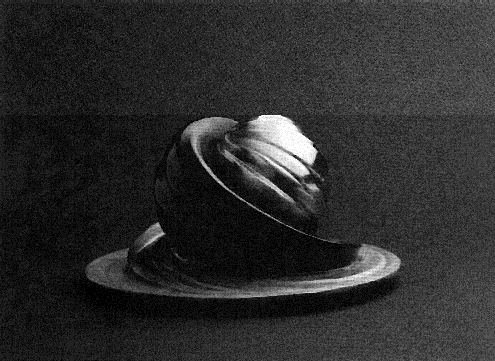
"YIN AND YANG", a bronze sculpture by Renate Stendar.
RENATE STENDAR - THE PROPHET OF HOPE
By B. John Zavrel

"YIN AND YANG", a bronze sculpture by Renate Stendar.
"Ever since my early childhood the joy of being creative has been a dominating factor in my life", says about herself the Swiss sculptor Renate Stendar.
After completing her studies at the art academy in Düsseldorf under the guidance of Professor Walter von Wecus, Renate Stendar's artistic career began as a theater stage designer. In the beginning, the theater offered the best opportunity to express her artistic ideas. In her work as a stage designer she had to capture the spirit and ideas of playwrights and poets. And it is precisely here where we can find the roots of her future work as a sculptor. Her sculptures always tell a story: dramatically, full of power ideas, emotions, and tension.
The 20th century has seen a disturbing trend for standardization and specialization in nearly all aspects of our life, which has led to impoverishment of the quality of life and to the feeling of emptiness in the individual. For this reason, Renate Stendar does not limit her creative work only to sculpture, but has, like the German sculptor Kurt Arentz, created a number of unique paintings to explore those aspects of Nature which can be better depicted using the line, light, shade, and colors. Unlike Kurt Arentz, whose masterful depiction of the animal sculpture is enlarged by his colorful paintings of flowers and trees in blossom, Renate Stendar's mystical, semi-abstract paintings depict the forces of Nature in their elemental aspects.
And this is one of the central ideas in the work of Rendate Stendar: the depiction of the elemental forces of Nature: the continuing process of creation, preservation, and dissolution.
We are awed by the often apocalyptic themes in her sculpture, such as "The Last Man", where in an enormous, inescapable maelstrom, man is drawn into the universe. One has to start thinking about our culture and the course of our civilization upon being confronted with her sculpture "Prometheus Betrayed". Here, man is shown producing the weapons of mass destruction and thus betraying the noble ideals of Prometheus -- the god who brought fire, light, and higher culture to mankind.
The group of sculptures which includes "Bride of the Wind", "Undine", and "Daughters of the Erlking" is quite unique. Created with a dynamic, fluid notion, these simple forms, and yet most powerful in their execution surely belong to her most interesting and unique works. They seem to be developed from a central point, in one single motion, one wave, one creative spiral.
This urge toward simplicity of form leads her even further in her sculptures like "Hope", which was recently acquired by the U.S. Museum of European Art in Clarence, New York. Here simple flower figures, which represent human emotions, are reduced to their most basic, nearly abstract form.
Renate Stendar often depicts themes which touch upon the great problems of our time, the opposites of right and wrong, creation and destruction, life and death. But yet, her depictions of these themes are never final, no matter how apocalyptic and dramatic they may seem. There is always something left -- HOPE.
In her bronze relief "Phoenix" the firebird representing re-birth is leaving the crumbling earth behind and flies up towards a star that is being born. In the sculpture "Fear not, I bring you good tiding of great joy" an angel assures mankind that they are not lost. Hope. This theme comes up again and again, directly and indirectly in the sculpture and paintings of Renate Stendar and her masterful representation of the eternal cycle of creation.
The themes depicting the elemental forces of Nature find their
further artistic development in Renate Stendar's oil paintings. The
cyclus "Four Seasons" depict the forces of Nature in their stages of
conception, growth, maturity, and dissolution. This idea is further
carried out to its roots in her masterful depiction of the beginning
of creation in her painting "Yin and Yang". The passive male and the
active female principles combine to bring about the
Also noteworthy among this group of paintings is "Sun" -- a deeply mystic depiction of the source of all light and life in our universe. This is the essence of Renate Stendar's art: the depiction of the universal aspects of life, of its mystical meaning, the search for a higher purpose of mankind.
Copyright 1996 PROMETHEUS
Reprinted with permission